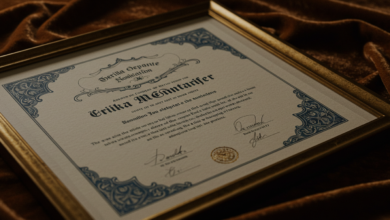🎬 Jane Birkin Movies: A Cinematic Legacy Worth Celebrating

Introduction
Jane Birkin was not just a muse. She was an artist in her own right. Her name evokes timeless fashion, poetic lyrics, and sultry melodies. But beyond the music and style, Birkin was a compelling actress. Her film career, often underappreciated, reflects a nuanced and bold cinematic journey. Across decades, genres, and countries, Jane Birkin made her mark. This article dives deep into her filmography, exploring her iconic roles, collaborations, and enduring impact on cinema. You know about theglobespot, andaazdaily, openrendz and jane birkin movies also Buzzfeed.
Early Life and Move into Film
Jane Birkin was born in London in 1946. Her mother was actress Judy Campbell, and her father was a Royal Navy officer. From an early age, she was exposed to the world of art, theatre, and performance.
In the 1960s, she moved to France, a country that would become central to her identity. It’s here that her career truly blossomed. While many know her from music collaborations with Serge Gainsbourg, her acting career actually preceded and paralleled her musical fame.
First Roles and Breakthrough
The Knack…and How to Get It (1965)
Her film debut was a minor role in Richard Lester’s The Knack…and How to Get It. The film won the Palme d’Or at Cannes, and although Birkin’s role was small, it marked her official entry into cinema.
Blow-Up (1966)
Birkin gained more attention in Blow-Up, Michelangelo Antonioni’s legendary film. The film was avant-garde, provocative, and visually stunning. Birkin’s nude scene became controversial at the time. Yet it also revealed her fearless approach to roles. She wasn’t afraid to challenge norms.
Rising Star in French Cinema
Slogan (1969)
This is where things changed. In Slogan, she starred opposite Serge Gainsbourg. Their on-screen chemistry was undeniable. Off-screen, their relationship began here too. The film blended love, satire, and style—essentially, it became a prototype for the Birkin-Gainsbourg era.
La Piscine (1969)
Although her role in La Piscine was small, it featured her alongside Romy Schneider and Alain Delon. The film’s slow-burning tension and sun-drenched aesthetic remain iconic. Jane added a quiet intensity to the ensemble.
The Birkin-Gainsbourg Collaborations
Jane Birkin worked on several films with Gainsbourg, her partner and frequent collaborator. These films often explored taboo themes and carried a surreal or sensual tone.
Je t’aime moi non plus (1976)
This controversial film, written and directed by Gainsbourg, starred Birkin as Johnny, a transgender man in love with a trucker. Bold and ahead of its time, it was banned in many places. But critics later hailed it for its audacity and raw emotion. Birkin’s performance was vulnerable, emotional, and powerful.
Cannabis (1970)
This crime thriller again paired her with Gainsbourg. Set against the gritty backdrop of the French underworld, it showcased a different side of Birkin—dark, intense, and dramatic.
Collaborations with Other Directors
Death on the Nile (1978)
In this Agatha Christie adaptation directed by John Guillermin, Birkin played Louise Bourget. It was a mainstream, international success and showed that she could shine even in ensemble Hollywood-style productions.
Evil Under the Sun (1982)
Another Christie adaptation, this time with Peter Ustinov as Poirot. Birkin’s performance was quiet but impactful. Her fragile, repressed character added mystery and depth to the film.
La Fille Prodigue (1981)
Directed by Jacques Doillon, this film focused on the breakdown of a young woman’s life. It gave Birkin the chance to explore more psychological territory. Her acting here was more internal, more complex. Critics noted this as a mature performance that separated her from the image of the ‘muse’ once and for all.
Range and Reinvention
Jane Birkin didn’t stick to one genre. She explored thrillers, romantic dramas, literary adaptations, and experimental films.
La Belle Noiseuse (1991)
Though not the lead, her presence in this Jacques Rivette masterpiece was noteworthy. The film explored the act of artistic creation and the artist-model relationship. It was long, slow, and profound. Birkin’s subtle energy grounded it.
Boxes (2007)
This film was personal. Birkin directed it herself and based it partly on her life. The story revolves around a woman who reflects on her relationships and motherhood. It was deeply introspective, poetic, and autobiographical. It cemented Birkin not just as an actress—but as a filmmaker.
A Cinematic Muse, But Also a Voice
While critics often labeled her as a muse, Birkin actively shaped her roles. She selected projects with artistic merit. She wasn’t passive. She was precise in what she brought to screen—emotion, restraint, or rebellion. She worked with auteurs. But she also broke free from them when needed.
Acting Style and Critical Praise
Birkin’s style was marked by:
-
Understated emotion
-
Natural vulnerability
-
A quiet presence that often stole scenes
She never aimed to dominate the screen with theatrics. Instead, she drew you in with subtlety. Reviewers praised her for not acting in the traditional sense. She became the character. She carried herself with grace and realism.
Cultural Impact Through Film
Jane Birkin influenced generations—not just in fashion, but in art and storytelling. Her films often reflect themes of:
-
Female desire
-
Rebellion against societal norms
-
Identity and transformation
She became symbolic of 1970s French cinema’s shift toward intimacy, sensuality, and psychological realism.
Later Work and Continued Relevance
Even in her later years, she continued acting. She appeared in:
-
Jane B. par Agnès V. (1988) – a hybrid documentary-fiction by Agnès Varda
-
The French Woman (1981)
-
The Dog in the Manger (1996)
-
Le parfum d’Yvonne (1994)
These roles showcased her versatility. She was not just the ingenue of the 70s. She aged gracefully into complex, multi-dimensional parts.
Conclusion: More Than a Muse
Jane Birkin’s film career is often overshadowed by her music and fashion. But her work in cinema is rich and varied. From British satire to French psychological drama, she proved her range time and again.
She was fearless in front of the camera. Whether playing a provocative lover, a mysterious suspect, or a tired mother reflecting on her life, Birkin left an emotional imprint. Her contribution to European cinema is undeniable.
While often viewed through the lens of style and celebrity, Jane Birkin’s acting deserves focused appreciation. Her movies are windows into eras, emotions, and artistic experimentation.



